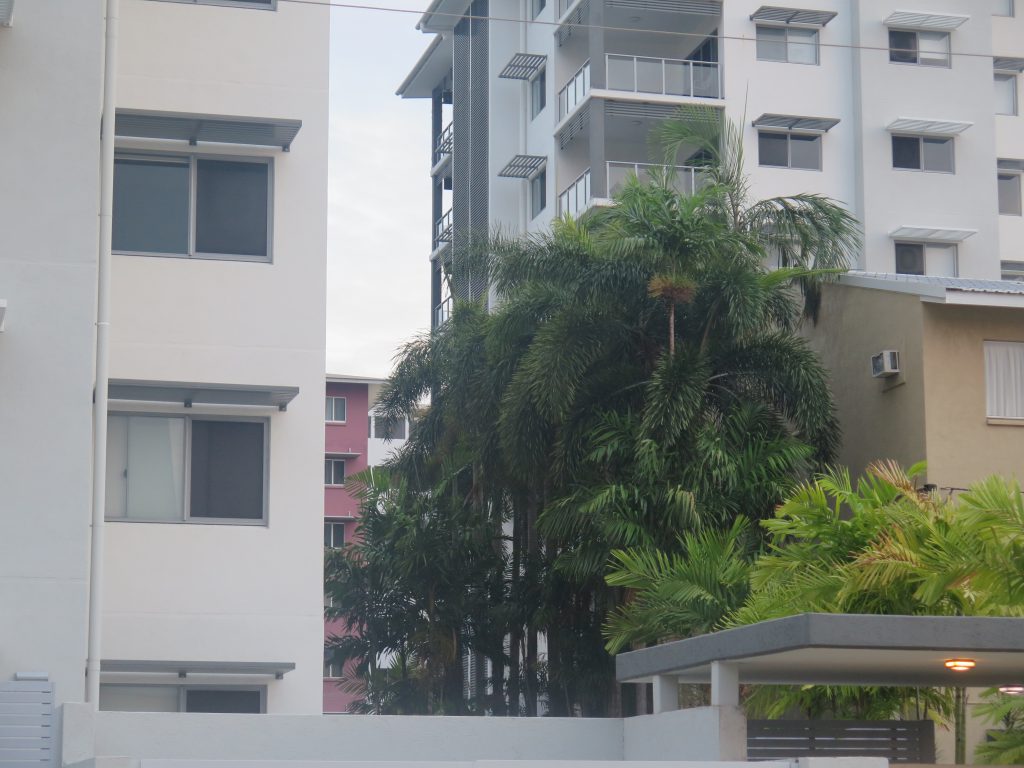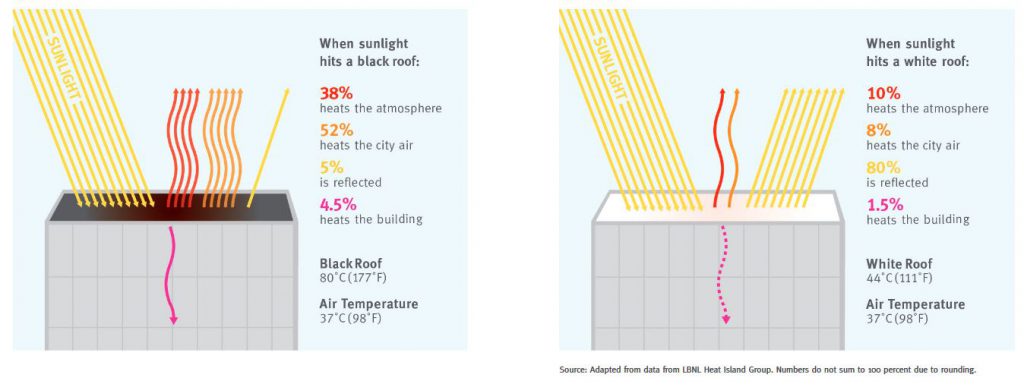Cool
buildings
Cool buildings
Buildings in Darwin can be designed to reduce heat accumulation during the day, which can improve outdoor thermal comfort and reduce energy demand for air conditioning. The large-scale adaption of buildings in Darwin to include features such as cool roofs and green roofs, and the use of light-coloured exteriors for buildings can improve the thermal performance of the urban area. The thermal properties of building materials can interact with the local microclimate to affect outdoor thermal comfort1. Using alternative materials that have high albedo (solar reflectance) along with shading can reduce the temperature of building surfaces. Surfaces stay cooler releasing less heat into the ambient air providing improved outdoor thermal comfort.

Cool roofs
Increasing the albedo of rooftops to reflect energy rather than absorb it is another passive solution that can help mitigate urban heat2. Strategies may include painting roofs and buildings white or light colours, using materials (e.g. specially designed tiles) that reflect light3-5. Cool roofs are characterised by high solar reflectance, but also by high thermal emittance. These positive effects reduce building energy consumption for cooling – thanks to their capability for increasing thermal losses and decreasing corresponding heat gains during sunny days6.
Previous research initiated by the NT Government undertook modelling of heat mitigation techniques for the Darwin CBD7. This modelling indicates that: increasing the reflectivity of the city could reduce the temperature in Darwin CBD by between 1.3°C – 2.5°C (depending on the level of reflectivity achieved). Increasing the albedo of streets and pavements would contribute to this cooling by reducing the temperature in Darwin CBD by between 1.7°C – 2.1°C. Reducing solar radiation on the main streets in Darwin through shading results in cooling of between 0.5°C – 1.3°C.
energy saving every month with the application of cool roof, with the largest saving in hotter months and no heating penalty in cooler months. Application of cool roof technology across Australia indicates energy savings can be achieved in all broad Australian climatic zones, with the greatest energy reduction associated with tropical, subtropical and desert environments8.
Image from: https://www.coolrooftoolkit.org/wp-content/pdfs/CoolRoofToolkit_Full.pdf

Thermal mass
KEY POINTS
- Reflective building materials can be used to improve outdoor and indoor thermal comfort by reducing the accumulation and retention heat
- Thermal mass can be used in combination with passive and active cooling in Darwin’s hot and humid climate to improve thermal comfort and reduce energy demand for air conditioning.
- The role of building materials in improving indoor thermal comfort and reducing energy demand can be validated for specific design with building energy software.
FURTHER INFORATION
References
- TBA
ACKNOWLEDGEMENT
Your Tropical City acknowledge the Larrakia people as the Traditional Owners of the Darwin region and pay our respects to Larrakia elders past and present. We are committed to a positive future for the Aboriginal community.
564 Vanderlin Drive,
Berrimah NT 0828
(08) 8944 8436
hello@yourtropicalcity.com.au
PARTNER
ACKNOWLEDGEMENT
Your Tropical City acknowledge the Larrakia people as the Traditional Owners of the Darwin region and pay our respects to Larrakia elders past and present. We are committed to a positive future for the Aboriginal community.
CONTACT
564 Vanderlin Drive,
Berrimah NT 0828
(08) 8944 8436
hello@yourtropicalcity.com.au
PARTNER